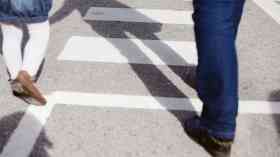Collaborating via the platform
 It was just before Christmas in 2006, when the government announced funding for its learning platform (LP) framework agreement. Defined by Becta as combining ‘several functions, such as organising, mapping and delivering curriculum activities and the facility for learners and teachers to have a dialogue about the activity, all via ICT’ the term ‘learning platform’ became the umbrella term for managed learning environments (MLE) and virtual learning environments (VLE). Ultimately the learning platform framework was set up to help schools and colleges meet the government’s target of providing all learners with an online personalised learning space by 2008.
It was just before Christmas in 2006, when the government announced funding for its learning platform (LP) framework agreement. Defined by Becta as combining ‘several functions, such as organising, mapping and delivering curriculum activities and the facility for learners and teachers to have a dialogue about the activity, all via ICT’ the term ‘learning platform’ became the umbrella term for managed learning environments (MLE) and virtual learning environments (VLE). Ultimately the learning platform framework was set up to help schools and colleges meet the government’s target of providing all learners with an online personalised learning space by 2008.
However, five years on and there are as many schools not using their learning platform effectively, as there are success stories. So where did it all go wrong?
Barriers to Success
The Becta document, entitled ‘An Introduction to Learning Platforms’ was aimed at ensuring schools invested wisely. It outlined best practice procurement advice including: ‘Know why you want a learning platform, be confident and clear in your vision, procure carefully, formulate clear questions to ask suppliers, know that the learning platform will relate to the other systems you want it to, make the learning platform belong to your organisation and plan your implementation.’ All good advice.
However it was the section on training and change management that turned out to be the most fundamental. Becta stated that ‘The extent of the training needs that a learning platform will impose on an organisation and all users of the system should not be underestimated.’ Never a truer word had been spoken. While the Becta framework provided schools with a list of ten approved suppliers who were deemed to deliver high-quality, value-for-money learning platform services, it appears that the level of training, advice, guidance and change management provided was not standardised.
Dylan Jones, managing director of LP provider itslearning and BESA member comments: “Our ethos has always been about change management and training, which is possibly why we are one of the few remaining successful learning platform providers. The most fundamental part of a successful learning platform implementation is based on the school understanding how to achieve a system that is most appropriate for their establishment. We have seen many schools using alternative systems ineffectively. This is always down to a lack of sufficient guidance, training and change management offered by the LP provider. The implementation of a learning platform can deliver a positive transformation for schools, and suppliers need to recognise this.”
Learning platform take-up
Certainly some schools do get this support and many do run effective platforms across their learning environment. However, research carried out by BESA in May 2009 showed that only 42 per cent of primary school teachers were using learning platforms and 22 per cent of primary schools had no plans to implement one. The initiative fared better with secondary schools, with 67 per cent using a learning platform and a further 29 per cent stating that they would be implementing one later that year. Only four per cent of secondary respondents to the BESA survey stated that they did not plan to make use of a learning platform in the future.
For many schools there is a perfectly good reason that they haven’t yet rolled out their learning platform. All Saints Catholic School and Technology College in the London Borough of Barking and Dagenham invested in Moodle at the height of the learning platform framework agreement. Headteacher, Kevin Wilson explains why they have yet to fully implement their system. “Moodle requires development to each school’s requirements but ours was never properly developed. This was largely due to the imminence of the Building Schools for the Future (BSF) programme. We put all the investment in development on hold because I did not want to spend our budget on something that might be short term, only to be changed by a managed service partner. BSF held us back seriously and then disappeared!”
Kevin continues: “We are undertaking a major review of the purpose and nature of homework. At the heart of this is using a LP as the vehicle for delivery. A member of ICT staff has completed training in July. She will train subject staff next term. Parents will be a key element to the success of the project so they will be included in the launch.”
Successful Implementations
Looking at a school which is already using their learning platform, Chris Silverton, VLE co-ordinator at Ninestiles School, Birmingham summaries his view on how to achieve a successful implementation: “In today’s multi-media environment it is vital to enrich each student’s visual experience to stimulate their learning. The visual aspect of all learning has to be engaging to students, and the power of rich media should never be underestimated.”
Students at Ninestiles, who use a Frog learning platform, refer to their learning by the images or characters that illustrate the activity. Chris continues: “Organising the learning into a more logical structure contributes to student engagement but it is also important to incorporate a less formal aspect to the LP. Integrating the learning with student information such as their timetable, club announcements, lunch menus and of course a social media aspect to ensure students can communicate with their peers is attractive to students.”
Using other schools’ ideas and experiences is something that Phil Spoors, head of ICT at Cramlington Learning Village, Northumberland wisely did: “We learned a lot and saved ourselves a lot of time by taking other schools’ ideas,” explains Phil. They then set up a team of staff from different areas of school such as administration, senior management, technicians, governors and of course teachers to decide what was needed in the LP. Phil continues: “Another decision that has been fundamental in the success of our platform was that all other ICT systems used in the school are now accessed through the platform. This ensures that students and staff have to engage with the system every day and are therefore more likely to use all the features available.”
Learning from mistakes
Understanding the number of mistakes that had been made by many schools, Eastfield Primary school in Northamptonshire is another example of a school who wanted to ensure they got it right. Headteacher, Chris Hill explains their path to implementing a successful learning platform: “Eastfield is a part of Northampton’s Area Improvement Partnership (AIP), which was established to promote effective collaboration between schools in the area to raise educational standards.
“Twenty schools in the AIP worked together to visit each other and review the learning platforms currently used in each school. We all fed back our thoughts, not just on the platform itself but how it was used in each school.
“As a result of the review, it was decided that we’d implement the platform itslearning. The most important aspect of a successful implementation is, in my view, having the time to drive the project. As headteacher I ensured that I could put aside several hours a week to steer the implementation forward. I was also fortunate enough to have motivated staff in the school who, once they had been trained, were very enthusiastic to use it.
Gaining Feedback
Chris Hill continues: “At first we didn’t know what content we’d have on the platform. So we have regular training days and once a month the staff meeting is focused on everyone giving feedback on the learning platform. It is all about finding the time for the staff to share ideas, provide feedback and suggest new ways of using the system; this has to be done on an on-going basis. Like any technology it is about keeping it refreshed to ensure the content evolves in line with the school.
“Starting at the basic level, we have each item of coursework on the learning platform which is linked to the topic work, any relevant websites and related homework activities.
“We also now have our worry boxes on the learning platform, where children can add in a note on anything they are particularly worried about. Historically this was done with actual boxes in the corridors but the children found it easier to log their concerns online.
“Other things that we have on the learning platform, of which are all ideas that came from the teaching staff, include discussion boards where the children can comment on things such as films they may have watched at film club, song lists for the school choir so they can practice their music at home and Eastfield TV which was set up to involve the parents in the school. Eastfield TV is a feature which enables the parents to see video clips of school activities such as assemblies, or festivals so they can become more involved in their child’s learning. Recently we have invited the children to vote on our school values. From a possible list of 22 values, the children can vote for their favourite two and from this, ten school values will be agreed.
“As soon as we rolled it out across the school, the children’s reaction was enough to make all the work worthwhile.
“To a certain extent success is more about the content than the platform itself. However our children do love the look and feel of the itslearning platform and possibly the most important fact is that it is easy to use. Teachers do update the information on the platform on a daily basis including, for example, setting homework but because they are so busy and the system is so easy to use we let the children get involved by posting comments such as club information.”
Moving Forwards
So the future for learning platforms appears to be bright.
BESA’s 2011 research revealed that there has been a notable increase in the number of school indicating they are well resourced with learning platforms. Most notable has been the increase between 2008 and 2010, where those indicating being well-resourced with learning platforms doubled on average to 42 per cent (primary 44 per cent, secondary 52 per cent). However for primary schools the view was relatively polarised with 49 per cent feeling that by 2013 they would continue to be under-resourced. This leaves almost half of primary schools being under-resourced in learning platform technology.
The position of secondary schools is also stabilising, with 52 per cent currently feeling well-resourced. A further 30 per cent had expected to be in this position by 2012, leaving fewer than a quarter under-resourced by 2012. This suggests that schools have re-assessed their view on learning platforms over the last year.
Ray Barker concludes: “BESA discovered that the key reasons for schools’ failure to effectively implement learning platforms were lack of guidance from local authorities, not enough training for teaching and support staff, and concerns over access for pupils without a computer and internet connection at home. The results did indicate that the majority of schools recognise the importance of the policy, but also that the challenges they face with regard to implementation will be difficult for them to overcome. These are not to do with the technology itself, but rather to do with organisational, communication and financial issues.”
For more information
Web: www.besa.org.uk
Latest News
19/12/2025 - 09:54
The Education Committee has expanded its ongoing inquiry into the early years sector to examine how safeguarding can be strengthened in early years settings.
18/12/2025 - 09:25
The UK will be rejoining the Erasmus programme in 2027, following a package of agreements with the EU.
17/12/2025 - 09:31
Ofqual has fined exam board Pearson more than £2 million in total for serious breaches in three separate cases between 2019 and 2023 which collectively affected tens of thousands of students.
16/12/2025 - 09:19
The average funding rates will increase by 4.3% for under 2s, and by almost 5% for 3-and-4-year-olds.
15/12/2025 - 10:30
Local colleges are set to receive £570 million in government funding to expand training facilities in areas such as construction and engineering.







